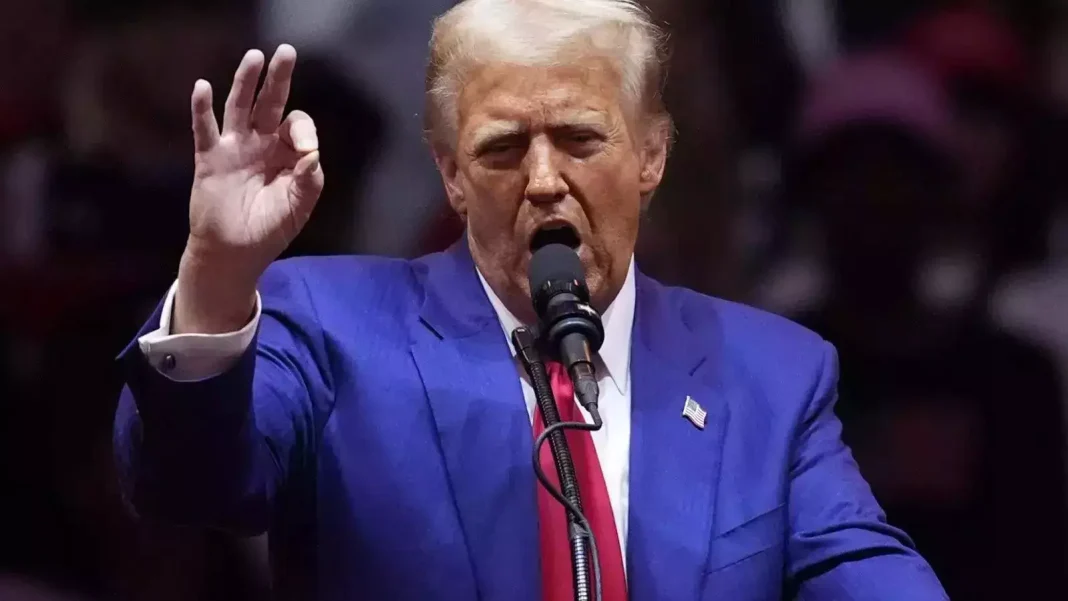In a significant move impacting global trade dynamics, President Donald Trump has announced the imposition of a 25% tariff on all steel and aluminum imports into the United States, effective from Monday. This decision marks a continuation of Trump’s aggressive trade policies aimed at bolstering domestic industries and addressing trade imbalances.
In This Article:
Historical Context
During his first term in 2018, President Trump introduced tariffs of 25% on steel and 10% on aluminum imports, citing national security concerns under Section 232 of the Trade Expansion Act of 1962. These measures were intended to protect U.S. industries from foreign competition and reduce the trade deficit. Over time, certain trading partners, including Canada, Mexico, and Brazil, received duty-free exemptions. Subsequent negotiations led to duty-free quota arrangements with the European Union, the United Kingdom, and Japan.
Current 25% Tariff Announcement
The newly announced 25% tariffs will apply universally to all countries exporting steel and aluminum to the U.S., without exceptions. This move has raised concerns among international allies and trading partners who had previously been exempted or had negotiated favorable terms. The administration has also signaled the introduction of “reciprocal tariffs” against nations that retaliate against U.S. trade measures.
Global Reactions
The announcement has elicited varied responses worldwide:
- Australia: Prime Minister Anthony Albanese is set to discuss the implications with President Trump, emphasizing the importance of free and fair trade. Australia is seeking exemptions similar to those granted in 2018, highlighting the strong trade relationship and mutual defense alliances between the two nations. citeturn0news16
- Canada and Mexico: Both countries, major suppliers of steel and aluminum to the U.S., are evaluating the potential impact on their industries. Previously granted exemptions, they now face uncertainty under the new tariff regime.
- European Union: EU leaders have expressed concern over the broad application of the tariffs and are considering appropriate responses to protect their economic interests.
Economic Implications
The reintroduction of these tariffs is expected to have several economic consequences:
- Domestic Industry Support: The tariffs aim to protect U.S. steel and aluminum producers from foreign competition, potentially leading to increased production and job retention within these sectors.
- Increased Production Costs: Industries reliant on steel and aluminum, such as automotive and construction, may face higher input costs, potentially leading to increased prices for consumers.
- Global Trade Tensions: The broad application of tariffs may lead to heightened trade tensions, with affected countries considering retaliatory measures, potentially resulting in a trade war.
Legal and Political Considerations
The use of Section 232 of the Trade Expansion Act of 1962 allows the president to impose tariffs on imports that threaten national security. This provision has been a cornerstone of Trump’s trade policy, enabling the administration to take unilateral action on trade matters. Critics argue that the broad application of national security as a justification may lead to challenges within international trade organizations and strain diplomatic relations.
Future Outlook
As the tariffs come into effect, businesses and governments worldwide will closely monitor the economic and political fallout. The potential for negotiations and exemptions remains, as affected countries seek to mitigate the impact on their industries. Domestically, the administration will need to balance the benefits to the steel and aluminum sectors against potential adverse effects on downstream industries and consumers.
President Trump’s decision to impose a 25% tariff on steel and aluminum imports represents a significant escalation in trade protectionism. The move underscores the administration’s commitment to reshaping U.S. trade policy, prioritizing domestic industry protection, and addressing perceived trade imbalances. The global response and ensuing economic impacts will unfold in the coming months, shaping the future landscape of international trade.



